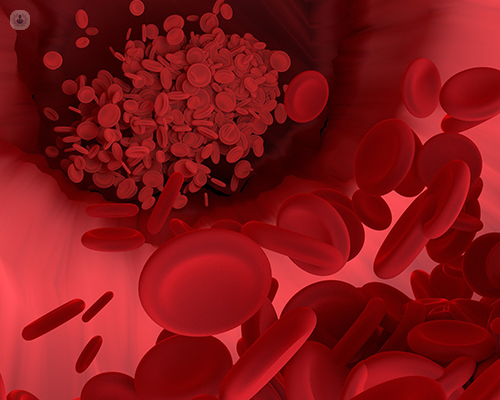Aplastic anaemia
Dr Salim Shafeek - Haematology
Created on: 04-26-2017
Updated on: 09-06-2023
Edited by: Jay Staniland
What is aplastic anaemia?
Aplastic anaemia is a rare and serious condition in which the body does not produce enough red blood cells.
Red blood cells are responsible for carrying oxygen molecules from the lungs to all around the body, delivering them to cells to produce the energy they need. They carry this oxygen using a protein called haemoglobin. The term “anaemia” describes a condition in which there are not enough red blood cells or haemoglobin and therefore, the body suffers because the cells are not receiving sufficient oxygen.
Red blood cells (RBCs) are made in the bone marrow (the spongy centre of our bones), where our natural stem cells are found. These can mature into all kinds of blood cells (red, white and platelets). The bone marrow normally regulates the blood cell count to make sure there are neither too many nor too few. Aplastic anaemia involves damage to the bone marrow, and as a result, it does not produce enough blood cells of any type.

Prognosis of aplastic anaemia
In some cases, aplastic anaemia is short-term. In other cases, it can be chronic. If left undetected and untreated, the condition can become fatal. A specialist in aplastic anaemia will provide a more detailed analysis of the condition, and be able to discuss and recommend the next steps in the treatment.
Symptoms of aplastic anaemia
The most common sign of aplastic anaemia is easy and frequent bruising, even without suffering a fall or blow. This is actually a symptom of thrombocytopenia, as the lack of platelets reduces the blood’s clotting ability. Another symptom is frequent infections due to the neutropenia weakening the body’s immune system.
Then, there are the classic symptoms of anaemia, including:
- tiredness
- weakness
- paleness
- dizziness
- shortness of breath, especially during and after exercise
- palpitations
- headache
Medical tests to diagnose aplastic anaemia
Blood tests can be used to detect if the red, white and platelet levels are low, which would indicate the condition.
A bone marrow biopsy is required to confirm the condition. In this test, a small piece of bone marrow is removed from the body and examined with a microscope. From this, a specialist haematologist can eliminate other potential blood-related diseases and establish if aplastic anaemia is the cause.
What are the causes of aplastic anaemia?
Aplastic anaemia can be inherited as a genetic condition or acquired due to the following:
- Exposure to radiation – this can damage many cells in the body, including those in the bone marrow. Radiotherapy to treat cancer can also have this effect, although it is usually temporary. Nobel Prize-winning Polish-French scientist Marie Curie died from aplastic anaemia that developed due to her pioneering work on radioactivity.
- Chemotherapy – like radiotherapy, chemotherapy can temporarily damage the bone marrow.
- Exposure to toxic chemicals, e.g. in certain pesticides.
- Autoimmune diseases.
- Certain drugs.
- Viral infections – certain viruses, such as Epstein-Barr have been linked to aplastic anaemia.
- Unknown factors (idiopathic aplastic anaemia).
Can it be prevented?
There is no definitive method of prevention. There is the possibility that avoiding toxic chemicals minimises the chances of developing aplastic anaemia, but this has not been proven.
Treatment for aplastic anaemia
Treatments may include:
- Blood transfusions – these can help to control bleeding and relieve the symptoms of anaemia. However, if there is still a problem with the bone marrow, this will require another form of treatment.
- Bone marrow transplant – the donor bone marrow has to be a close match to the patient, such as from a sibling or parent.
- Immunosuppressive treatment – this targets a type of white blood cell called lymphocytes and decreases the number of lymphocytes in the patient’s blood, which stimulates the bone marrow to restart blood cell production. It can take a while for this treatment to take effect and during this time, the patient will continue to be anaemic and vulnerable to infections.
Which type of specialist treats aplastic anaemia?
A haematologist, a specialist in the diagnoses and management of blood-related health conditions, treats aplastic anaemia.
